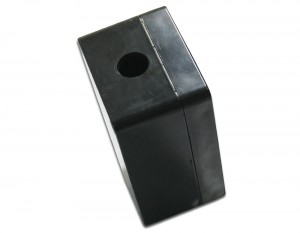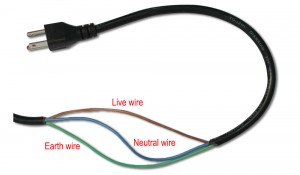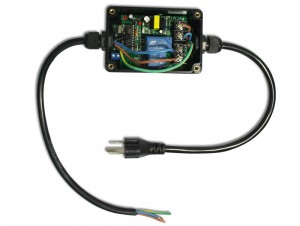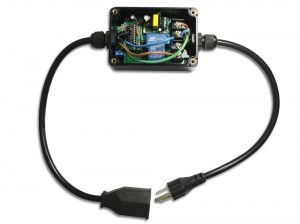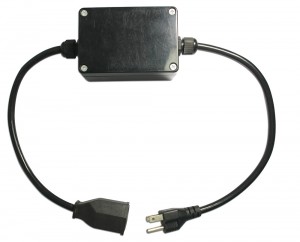Customized wireless control solutions have always been our key service to meet our customers’ needs, especially for those unfamiliar with wireless control equipment products, we provide optimized solutions. For more information, please visit Carymart online shop.
We have a client who has an airstrip with AC220V runway lighting on the runway and a DC12V solar windsock light. The runway lights are 1000 meters away from the customer’s building and the solar lights are 150 meters away from the runway lights. When the plane lands, he needs to turn on both the runway lights and the solar windsock light at the same time.
The runway light is turned on / off by a manual switch from the building, however, he needs to walk up to the solar windsock light at 1000 meters to turn on the solar windsock light. For ease of operation, the windsock light is set from dusk to dawn has been open. But one of his neighbors complained that the windsock light have been lit to disturb the lives of them. So he told us the details of the situation by mail description clearly and wanted a wireless control solution to solve this problem. He demanded that he didn’t want to connect a control line from the solar windsock light to the building because it was 1000M away, the wiring was too cumbersome and the cost was too high. He wanted to install a wireless control system between the runway lights and the solar windsock lights so that they could operate simultaneously. In other words, when the runway lights are turned on, the solar lights are automatically turned on at the same time. When the runway lights are turned off, the solar windsock lights are also automatically shut down at the same time.
We recommend to customers based on the actual situation and customer requirements, a wireless lamp remote control equipment. The device includes a receiver S1X-DC12-ANT3 (model 0020490) and a transmitter CB-2V-AC (model 0021048). This transmitter is an ac power trigger type remote control, and it has two input lines. When an ac voltage is input, the transmitter is triggered and a radio control signal “on” is transmitted. When AC voltage stops input, the transmitter is also triggered and a wireless control signal “OFF” is transmitted. The receiver is DC 12V input / output type, the maximum operating current is 10A, and it has a waterproof case and external telescopic antenna, so it can be installed outdoors. This wireless light remote control device in the open area can be achieved as far as 1000 meters working distance. The user first connects the runway light’s AC220V power supply to the transmitter’s two input lines, and then the windsock light to the receiver’s output terminals.
The wireless light remote control device example picture and the specific operation are as follows:
When the user opens the runway light from the building, the transmitter (CB-2V-AC) detects that its two input lines have AC voltage inputs, then it transmits an “ON” wireless signal to the receiver. When the receiver (S1X-DC12-ANT3) received this wireless signal, it outputs a 12V power to turn on the windsock light. When the user turns off the runway lights from the building, the transmitter (CB-2V-AC) detects that the AC voltage has ceased to be input, then it transmits another “OFF” wireless signal to the receiver. When the receiver (S1X-DC12-ANT3) received this wireless signal, it stops the output 12V power, windsock light is turned off.
This type of wireless remote control device can use one AC or DC device to wirelessly control another AC or DC device, and it can be used in many applications, such as lighting control of a port or a dock, remote control of industrial equipment, remote control offshore platform or onboard equipments.
Nowadays, the world is facing the problem of power shortage. Street lighting and guiding lights are indispensable facilities in daily life, and we put forward higher requirements on the energy saving of street lighting. Traditional street lamp control methods include manual control, automatic clock control, light induction control, SMS control, etc., but those ways can’t achieve the control requirements under special conditions. Like during construction, when a device is turned on, automatically turn on street lighting in order to effectively use lighting to avoid waste. Therefore, the radio frequency remote control system can be integrated with the management of street lighting, which is to achieve high-performance automated, intelligent lighting management, and reduce operational and maintenance costs.
The radio frequency wireless control system is composed of transmitter and receiver. There are two types of transmitters. 1. DC power (DC5V ~ 28V) trigger type, such as the transmitter CB-2V (model 0021044); 2. AC power (AC100 ~ 240V) trigger type, such as the transmitter CB-2V-AC (model 0021048). Both transmitters can work with different receivers. And there are three types of receivers. 1. DC power output type, such as the receivers S1X-DC (model 0020423) or S1PX-DC (0020436), they are usually used to control DC equipment; 2. AC power output type, such as the receivers S1X-AC (model 0020391) or S1PX-AC (model 0020440), they are usually used to control AC equipment; 3. The relay output type, such as the receivers S1L-DC (model 0020042), S1U-AC (model 0020330), S1PU-DC (model 0020046) or S1PU-AC (model 0020275). It is equivalent to a single-pole double-throw switch with a relay output, and the relay has three output terminals, normally closed, normally open and common terminal. These receivers are usually used to control various DC / AC equipments.
Users choose different transmitter and receiver for different combinations, and it can achieve different control methods. 1. Use one AC device to wirelessly control another AC device. 2. Use one DC device to wirelessly control another DC device. 3. Use one AC device to wirelessly control another DC device. 4. Use one DC device to wirelessly control another AC device, etc.
The working principle:
When the transmitter detects a DC or AC power trigger signal, it automatically emits an “ON” wireless signal, which is equivalent to the function of the button “ON” on the transmitter. When this power trigger signal is turned off or the power trigger signal is stopped, the transmitter automatically transmits another “OFF” wireless signal, which is equivalent to the function of the button “OFF” on the transmitter. When the receiver receives the “ON” or “OFF” wireless signal that will drive its relay to turn the connected device on or off.
Notice: The operating voltage of the transmitter is DC9V, and it can work for about 3 days with a model 6F22 9V battery. If the device has to work long term, we recommend using a DC9V power adapter.
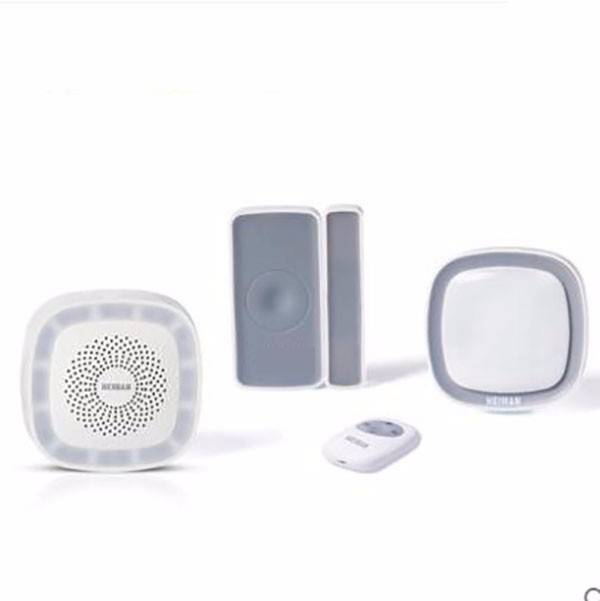
 Follow
Follow


